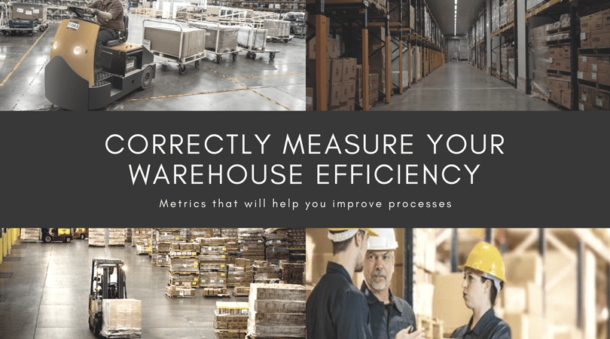In a warehouse, timing is everything. Remaining efficient in your warehouse processes is crucial to saving money and increasing customer satisfaction. While it is important to implement efficient processes in your warehouse, it is just as important to establish warehouse productivity metrics. These metrics are crucial to providing your company with data that will determine if your warehouse efficiency is increasing or decreasing. It informs you of processes that are working and those that need to be improved upon. Below are some performance metrics you should be using to keep track of your warehouse efficiency.
Product Turnover Time
The product turnover time measures how long it takes for a product to be sent out of your warehouse to the respective customer. This metric is important to keep track of because if your product turnover rate is too slow, you are losing money and limiting the number of products your warehouse can process.
Unloading Time
When a delivery arrives to your warehouse, it takes time to unload it and record the new products. The time it takes to complete this stage is important to following processes, since warehouse organization depends on this stage. You want to ensure that the delivery and unloading process is not creating a bottleneck in your daily operations.
Storing and Organization Time
Once the delivery is unloaded and recorded, it is time to store and organize it. It is important to note that the way you store your items can have a direct impact on warehouse efficiency. So if it is taking too long for your employees to find products within your warehouse, it might be beneficial to review storing processes.
Processing Orders
This metric measures the time it takes for a product order to go through to the warehouse after receiving an order. This stage is crucial because if too slow, it can slow down overall warehouse efficiency, affecting product turnover time.
Cost Per Item Shipped
Recording cost measures in a warehouse is helpful in determining where most of your money is going. This metric takes the total warehouse costs and divides it by the number of products shipped. By analyzing this number, you can determine if costs are low or too high. From there, you can adjust your warehouse processes as needed to save time and money.
_____________________________________________________________________________________________________________________________
REFERENCES
“Measuring Your Warehouse Efficiency – Logistics & Materials Handling Blog“| Adaptalift Hyster. Aalhysterforklifts.com.au. N. p., 2015. Web. 17 July 2017.
“5 Key Warehouse Performance Metrics For An Effective Operation.” Warehousing Insights | Material Handling Systems. N. p., 2016. Web. 17 July 2017.

